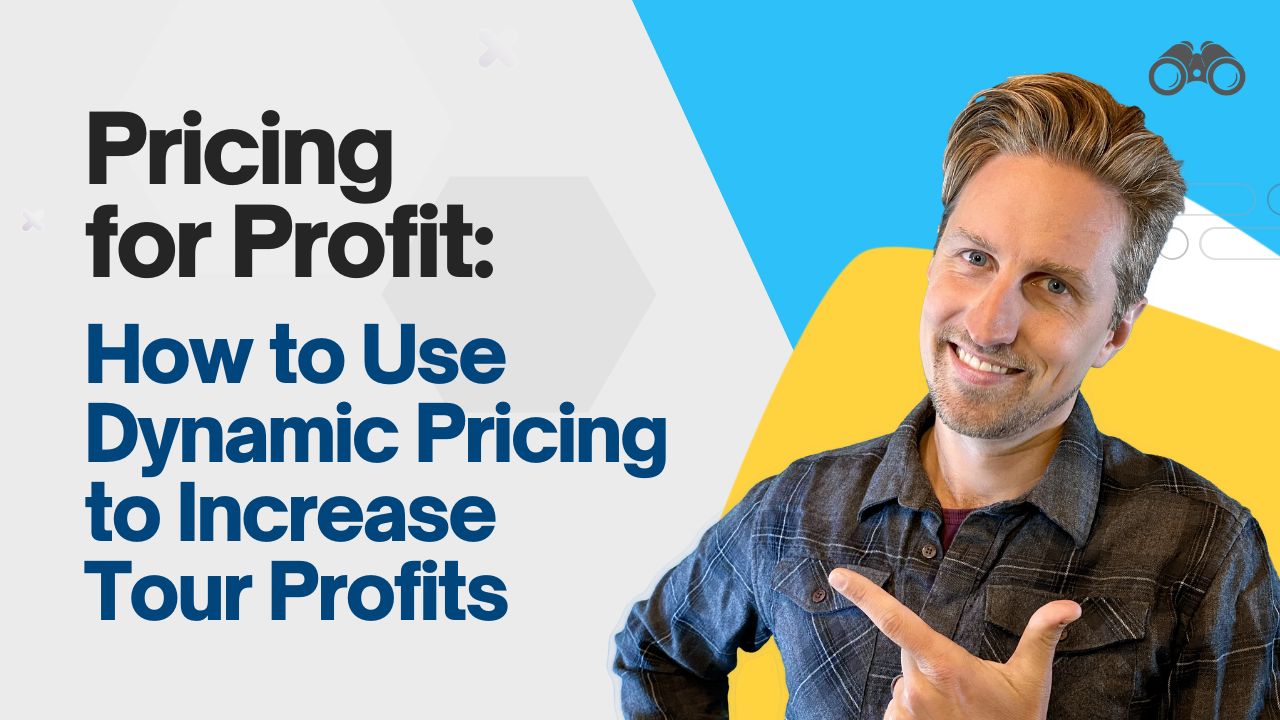Pricing for Profit: How to Use Dynamic Pricing to Increase Tour Profits
Imagine increasing your tour business revenue by 20% without adding a single new tour or spending an extra dime on marketing. This is a strategy that is used by many airlines and hotels, but it’s rarely used by tour operators. Welcome to the power of Dynamic Pricing—the underutilized strategy that could change your tour business for the better.
Welcome to the third installment in our series on boosting your tour business profits.
This time, we’re exploring an underutilized strategy that can positively impact your bottom line: Dynamic Pricing.
What is Dynamic Pricing?
Dynamic Pricing involves adjusting your tour, activity, or experience prices based on fluctuations in demand. This strategy allows you to capitalize on peak periods by charging higher rates without increasing operational costs.
For example, hiking tours might charge premium rates during sunny summer months when demand peaks. The same tours can be offered at lower prices during the shoulder season to stimulate demand and fill capacity. Many operators see high demand on weekends but struggle midweek. It makes sense to have higher prices on weekends and lower prices during the week.
The Benefits of Dynamic Pricing
Using the Dynamic Pricing approach accomplishes two important things. First, it increases the revenue per customer on high-demand days. Second, it incentivizes more flexible customers to shift to lower-demand days, helping increase total sales volume while boosting average order value.
While Dynamic Pricing is widely adopted in tourism by airlines, hotels, and rental car agencies, it’s still in its early days for tours, activities, and attractions. But we’ve seen some savvy operators experimenting with this profit-boosting strategy.
We want that to be you, too!
Keeping It Simple: Two Key Rules
Advanced Dynamic Pricing strategies can quickly become complex. For most operators, it’s best to start simple. We recommend focusing on just two rules: Date-Range Rules and Day-of-the-Week Rules.
Date-Range Rules cover seasonal demand shifts and predictable spikes like holidays or local events. Day-of-the-Week Rules allow prices to vary based on the day of the week, typically with higher rates on weekends and lower rates midweek.
Before implementing these rules, ask yourself a crucial question: When are your tours selling out? If you’re selling out well in advance, you’re likely missing out on potential customers and revenue. Ideally, you want to match supply and demand as closely as possible.
(And if you’re not selling out your tours, then this strategy is likely not for you.)
Real-World Examples
Let’s look at how some operators are using these rules. The Flying Bike Tours in Asheville offers a small price variation: $75 Sunday to Thursday, $79 on Friday and Saturday. Sunset Ranch Hollywood prominently displays their weekday discount, charging $100 for their Mulholland trail tour on Sundays but only $75 on Mondays.
The results speak for themselves. Sunset Ranch Hollywood reported a 41.4% increase in total guests and a 16.2% increase in ticket revenue after implementing Dynamic Pricing.
How to Implement Dynamic Pricing
Modern booking software makes implementing these rules relatively straightforward. It’s often a “set it and forget it” process, though you should continuously monitor performance and adjust as needed. (Watch the video for more specifics on how to do this!)
By combining date range and day of the week rules, you can potentially increase your annual revenue per customer by 10-20%.
Avoiding Pitfalls
While Dynamic Pricing can be highly effective, it’s important to implement it carefully. Avoid rapidly fluctuating prices, which can feel manipulative to customers. Ensure your pricing strategy feels fair and reasonable, and be transparent about your pricing structure.
For your tour sales page, use the phrase “Starting at” to indicate your base price. When customers click through, they’ll see the full range of pricing options.
At the end of the day, Dynamic Pricing offers a significant opportunity for tour operators of all sizes to increase their profits. By implementing these simple strategies, you can maximize your revenue during peak times, fill capacity during slower periods, and ultimately build a more profitable tour business.
And if you want support in implementing this in your own business, be sure to book a free 45-minute strategy call with us today!




